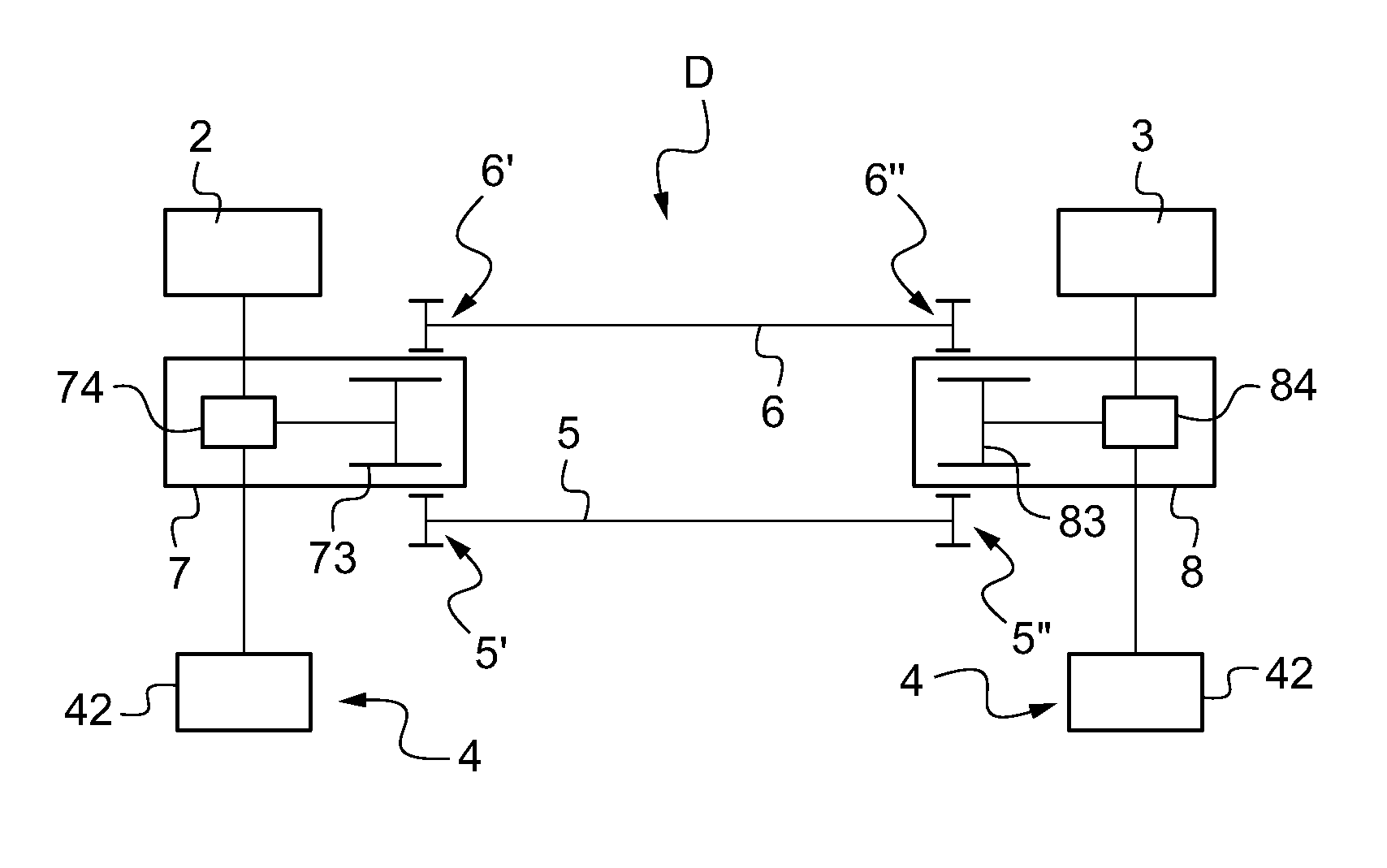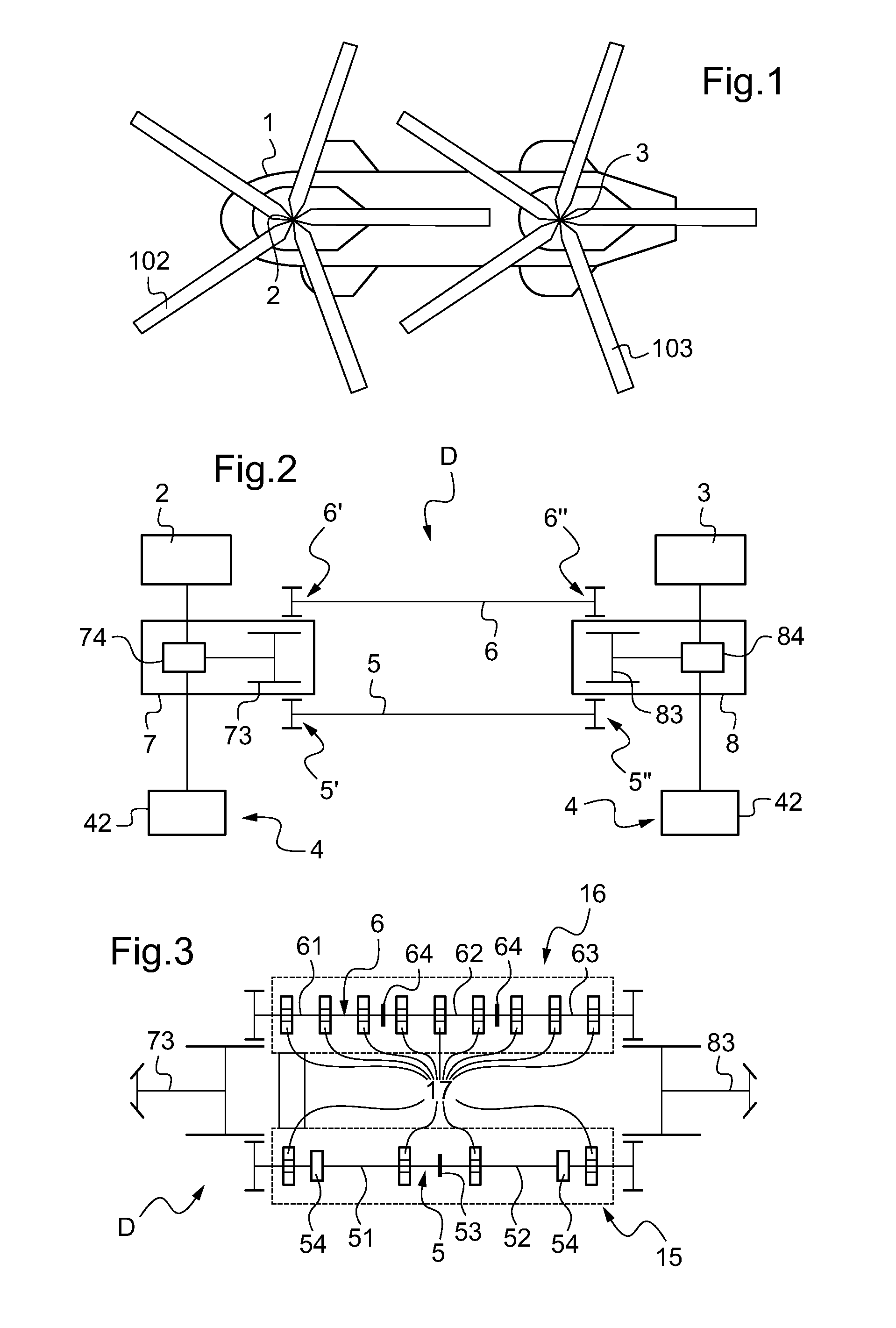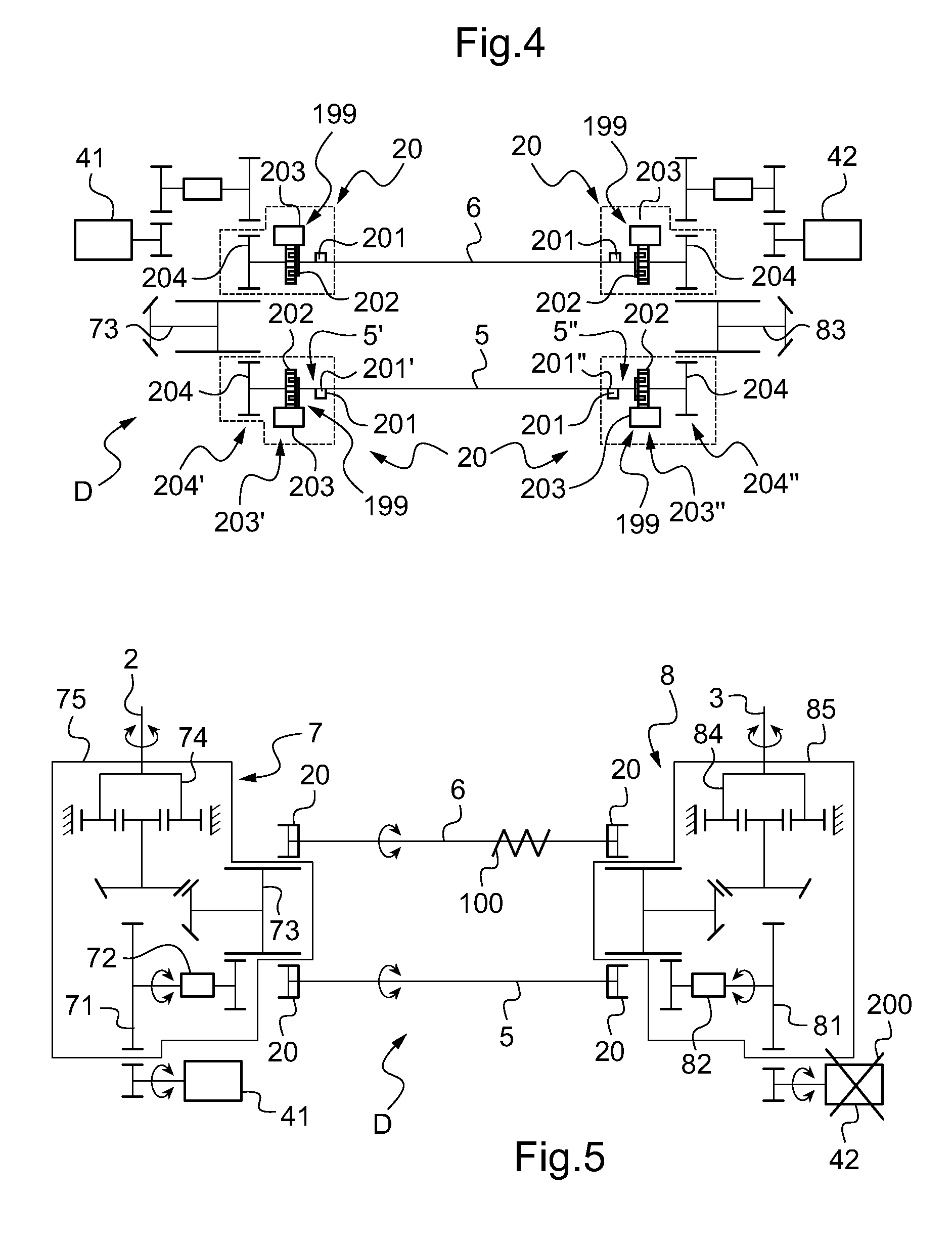Drive device for driving first and second lift rotors of a rotorcraft having twin rotors in tandem
a technology of rotorcraft and drive device, which is applied in the direction of propellers, seating furniture, water-acting propulsive elements, etc., can solve the problems of rotorcraft being destroyed, rotorcraft being subjected to a high level of yaw, and it is difficult to keep the rotors far enough apart to avoid any inciden
- Summary
- Abstract
- Description
- Claims
- Application Information
AI Technical Summary
Benefits of technology
Problems solved by technology
Method used
Image
Examples
first embodiment
[0076]Consequently, with reference to FIG. 3, and in a first embodiment, the drive device D has first and second retaining means 15 and 16 respectively for retaining the first and second transmission shafts 5 and 6.
[0077]Each of the first and second retaining means 15 and 16 comprises a plurality of bearings 17. Since the bearings are distributed longitudinally along each of the first and second transmission shafts 5 and 6, these bearings are in a position to guide the first and second transmission shafts 5 and 6 in rotation, even in the event of failure, so as to contain said shafts within a predefined volume.
[0078]It should be observed that FIG. 3 shows a first transmission shaft 5 of the supercritical type.
[0079]This supercritical first transmission shaft 5 comprises two segments 51 and 52 that are connected together by conventional means 53.
[0080]Each segment of the first transmission shaft 5 is then provided with two bearings 17 and with a damper 54.
[0081]In contrast, the secon...
second embodiment
[0083]With reference to FIG. 4, in a second embodiment, at least one emergency decoupling system 20 is implemented.
[0084]Thus, a respective emergency decoupling system 20 is arranged between each transmission shaft 5 or 6 and each of the power combiner means 73 and 83. In the event of one of the transmission shafts failing, each emergency decoupling system 20 enables the failed transmission shaft to be disconnected from one of the power combiner means 73 and 83.
[0085]Each emergency decoupling system 20 then comprises a mechanical assembly 199 provided with break detector means 201 for detecting breakage of the associated transmission shaft, with a shape-interference coupling 202, with control means 203, and with a link shaft 204.
[0086]In the event of one of the transmission shafts breaking, the transmission shaft will flap and generate undue vibration. The detector means 201 detects this vibration and sends a signal to the control means 203 that order the shape-interference coupling...
PUM
 Login to View More
Login to View More Abstract
Description
Claims
Application Information
 Login to View More
Login to View More - R&D
- Intellectual Property
- Life Sciences
- Materials
- Tech Scout
- Unparalleled Data Quality
- Higher Quality Content
- 60% Fewer Hallucinations
Browse by: Latest US Patents, China's latest patents, Technical Efficacy Thesaurus, Application Domain, Technology Topic, Popular Technical Reports.
© 2025 PatSnap. All rights reserved.Legal|Privacy policy|Modern Slavery Act Transparency Statement|Sitemap|About US| Contact US: help@patsnap.com



